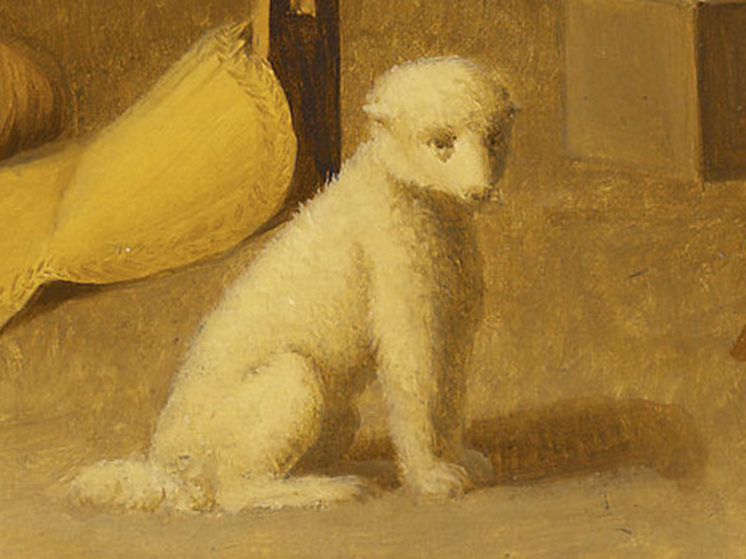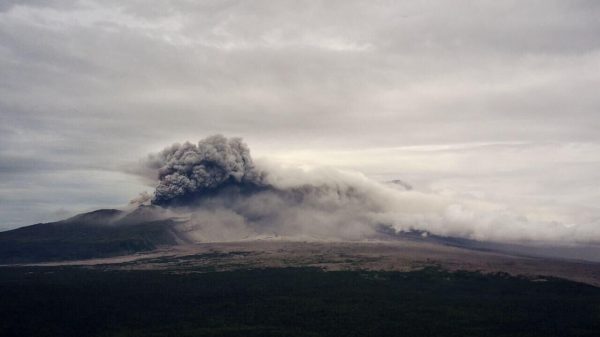Canada wants to regenerate an ancient breed
A new study has shed light on the extinction of an ancient dog species in Canada, accusing the colonial government of a policy aimed at destroying the culture of the indigenous peoples of North America. But the possibility that genetic remnants of Salish dogs survive in modern woolly breeds has raised hopes that the extinct species could make a comeback, but it remains unlikely.

The Coast Salish indigenous people developed a dog with a thick coat for spinning yarn, which became extinct. It took thousands of years of careful breeding, and it only took a few decades for colonists settling in western Canada to drive the Salish Woolly Dog to extinction.
Until recently, it was believed that the only remaining evidence of the breed's existence was a handful of woven blankets, a hide kept in a museum, and the oral traditions of the Salish (a group of Indian peoples in the northwestern United States and southwestern Canada) passed down from generation to generation. That is, until a British Columbia family noticed that their deceased dog Maggie bore an uncanny resemblance to an extinct breed seen in paintings.
The Coast Salish people, whose territory stretched from what is now the southern part of the Canadian province of British Columbia to the northern part of Oregon, led a comfortable existence, skillfully using natural resources. The furs of hunted animals were used, among other things, in various rituals. To ensure the purity of the breed, the animals were kept on the islands and cared for by Salish women who came by canoe and brought food, including Pacific salmon, herring and other marine mammals. The dogs were shorn with knives for cutting mussel shells.
“They were all cut as short as they do with sheep in England; and their wool was so dense that large sections of cut fur could be lifted by a corner, and they would not fall apart,” — Captain George Vancouver wrote about the local dogs in 1792, adding that the fur could be “twisted into yarn.”
Threads obtained from dog hair were mixed with plant fibers and mountain goat hair, resulting in a strong yarn , which could be easily dyed and then woven. Tremendous efforts went into producing blankets that were used for ceremonies and displays of wealth.
However, by the end of the 19th century, blankets and rugs made from dog hair disappeared. For years, market forces were blamed: the mass-produced wool blankets sold by the Hudson's Bay Company were cheaper and easier to make, and historians concluded that they displaced Salish wool blankets.
But to Eliot White-Hill, an artist called Kwulasultun on the Coast Salish, that explanation didn't seem right. He stated that his people could not simply get rid of animals: “In our culture, it is out of the question for our ancestors to simply get rid of woolly dogs because it was more convenient to use something else.”
< p>Researchers from the American Museum of Natural History in New York and the University of Victoria have now confirmed his words. Their findings, published in the journal Science, suggest that the Salish woolly dog was driven to extinction after the arrival of colonists in western Canada.
“The population of woolly dogs depended on the survival of those who looked after them. In addition to disease, expansion of colonialism, increased cultural upheaval, displacement of indigenous peoples, and decreased ability to manage the breed,» — reported by experts.
Successive colonial governments destroyed Salish culture by sending children to boarding schools to deprive them of the language and knowledge of key practices and crafts, including weaving. So, in 1884, the government banned the potlatch — a ceremony for the exchange of skillfully crafted woolen blankets and other valuable items. The ban was only lifted in 1951.
And Salish elders recall how the Royal Canadian Mounted Police and Indian agents simply exterminated dogs in the 19th century.
Despite what anthropologists believe, Although the species was largely extinct by 1859, reports of dogs bearing a striking resemblance to the Salish Woollies continued into the 1940s.
When Maggie's owner Cecilia Porter adopted the dog from a shelter in the early 2000s, all she was told was that she came from an Indigenous community on northern Vancouver Island. At the time, she was studying anthropology at the University of Victoria and noticed that her pet looked like the dogs on the cover of a textbook. After earning a master's degree in Arctic archaeology, she returned to the island for work and repeatedly saw images of dogs in scientific articles and old photographs.
“I just keep thinking that my dog is from a Salish place. And she has all the characteristics for this,” — she stated. Cecilia Porter, now a PhD candidate in archeology, believes that the genetic elements of the woolly dog likely persisted through generations, explaining Maggie's distinctive coat, coloring and head structure.
«I'm an analytical person. Although I don't have really strong archaeological evidence to say that she's definitely a woolly dog, a lot of her features are consistent with the type of dog we know exists.» states Porter. Maggie reportedly died of cancer in 2020 before her owner could test her DNA. But the coincidence would still be unlikely: DNA from woolly dogs is not in widely used databases.
The possibility that vestigial elements of the woolly dog survive in modern domestic animals represents a chance to recover at least one element of the people's culture Coast Salish

























































Свежие комментарии